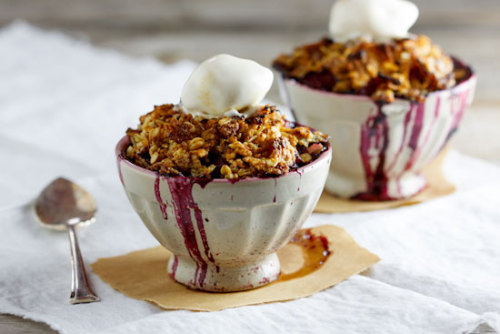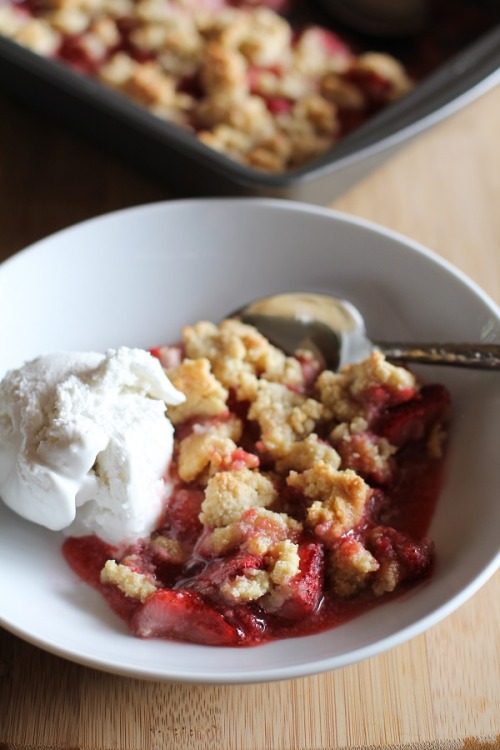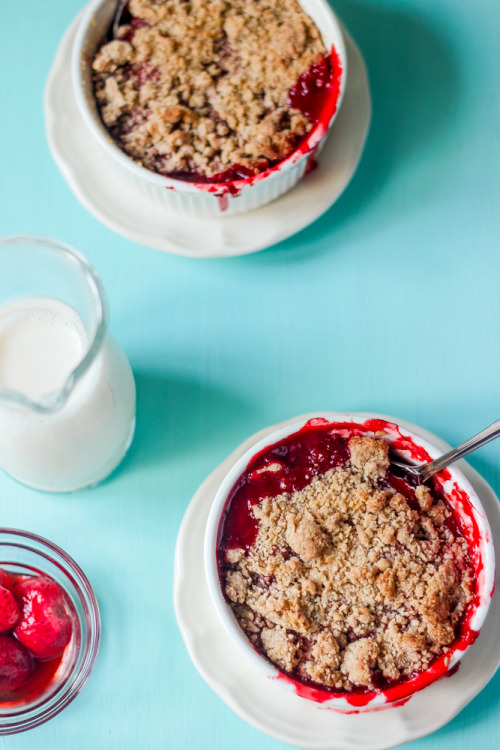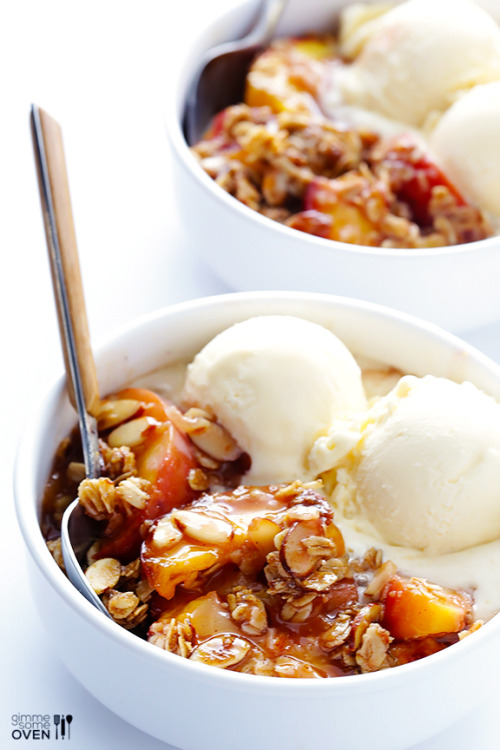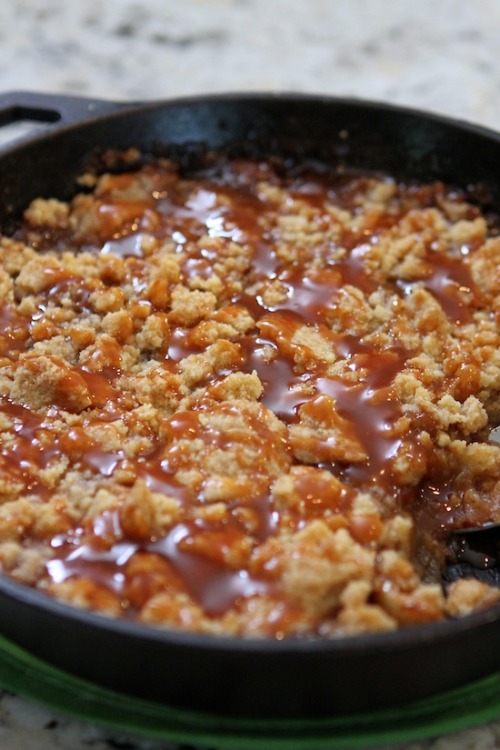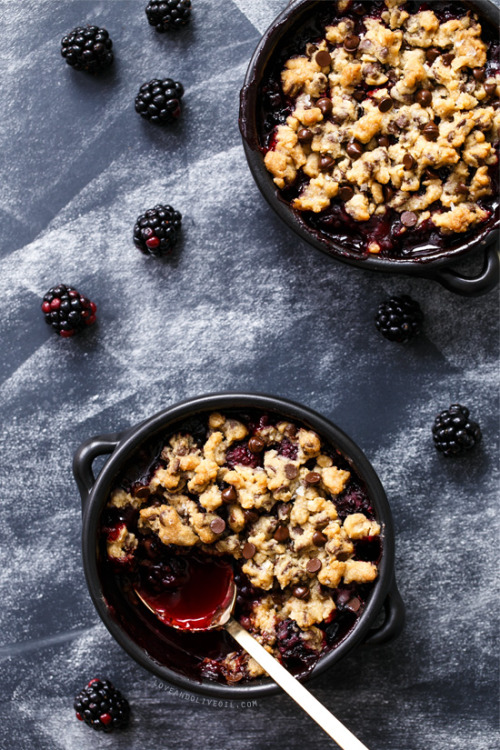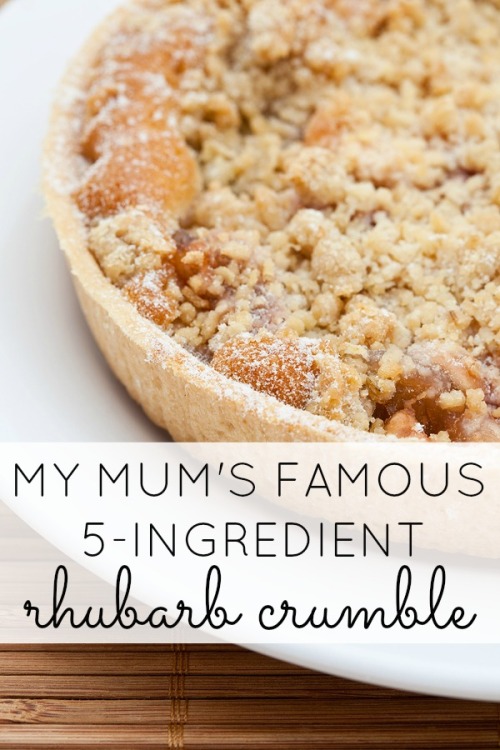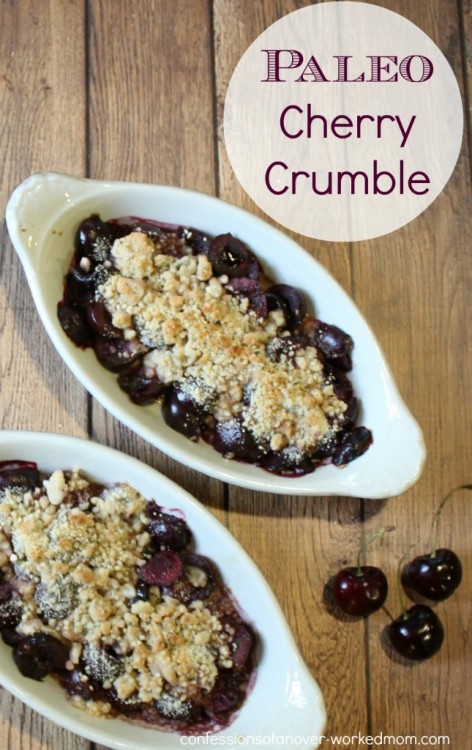My secret crumble: lessons from 15 years of crumble baking My sister Camille, who claims Bree Van De
My secret crumble: lessons from 15 years of crumble baking My sister Camille, who claims Bree Van De Kamp as her Desperate Housewives counterpart (at least on the cooking front), once shared her theory that you can pretend to be a good cook by mastering one savoury and one sweet dish. My sweet one: the fruit crumble. I build entire menus around the fruit crumble, the perfect comfort food. It works on children and adults, it is adaptable to any season and to any fruit bowl, it is a great way to use leftover fruits and it is almost impossible to mess up, unless you leave it in the oven a bit too long. Not that I have been a stranger to crumble disasters. There was the blueberry and peach crumble that burnt just short of being inedible. It taught me that to bake a crumble to perfection, you should turn off the oven as it is still slightly undercooked and leave it to finish baking as the oven cools down. But aside from that near carbonisation, most incidents occurred at the topping-making level, particularly at the flour-adding stage. Camille and I started making crumbles in our early teens, after we found a recipe in Julie, a girls’ magazine she had a subscription to. Even though neither our parents are the crumble type, the crumble is linked to memories of Nevers summers and pêches de vigne, the flavoursome, fleshy white and red peach that grew in our gardens by the basket-load. We would gather the fallen ones in the warmth of a late summer morning or the heat of a mid-afternoon. Camille would get on with the peeling while I would make the topping. One year, we decided to welcome our parents back from a work weekend away with our special: a pêches de vigne and stewed apple crumble. Too much enthusiasm getting the flour out of the packet meant our parents were met with a yummy dessert, a just-cleaned-to-the-last-corner kitchen and two freshly showered daughters. Ten years later, making a summer berry crumble for 12 in my London flat, windows wide open to deflect the July heat wave, a draught that turned the kitchen white surprised me. Not what you want two hours before guests arrive. So this is my second crumble-baking learning: adding flour needs to be handled with care. And while on the topic of topping, here is my third lesson: use salted butter. Most recipes advise unsalted butter but I find the salt, contrasting with the fat of the butter, the sugar of the crumble and the slight acidity of the fruits gives the desert an additional depth of taste. Possibly because the salt-fat-sugar combo is so addictive. I also differ from many recipes when it comes to assembling the topping. I never use anything but my fingers to do it, first because it was one of my favourite parts of the baking process when I was cooking with my sister, and as such is fuelled with memories, and also because no fork, no pulsing gives as good a result. Now for the less glamorous details: you need to really wash your hand and trim your fingernails. Also: no nail polish. I never put the mixture in the freezer or the fridge, although that’s something I only heard of recently, rather than because the eventual result is bad. I keep mentioning contrast and texture because this is what makes the crumble the perfect dessert. To add crunch, I often add almond flakes. Some recipes suggest multiple types of nuts, or even oats, but I stick to almonds, because I also include ground almonds in the dough and I don’t want to overpower with too many flavours. Almond flakes burn easily so it’s best not to add them from the start. I tend to scatter them on the crumble at the same time as I turn the oven off. Making the perfect topping however counts for naught if the fruits aren’t quite there. They need to be perfectly peeled. Biting into a spoonful of melting, fragrant apple and ginger crumble and finding a little leftover of skin isn’t the contrast you’re going for. I count the time it takes to peel the fruits in terms of TV shows. For instance, a rhubarb, pear and apple crumble for 15 is a three West Wing-episodes crumble. To reach the required texture, so the fondant perfectly contrasts with the crunchiness of the topping, some fruits, particularly winter ones, need to be stewed first. This is another chance to add depth, for instance with cinnamon or mint. The spice is more powerful if it was added at the stewing stage rather than on raw fruits, before putting the dish in the oven. Plus the spice used is an indication of what to serve with the crumble: rather than vanilla (expected, safe and boring vanilla) go for cinnamon or ginger ice cream. If you’ve added either to the fruits it will complement them perfectly. Not all fruits should be stewed though: for a mango and apple crumble, you should stew the apples but use the mango raw. Same for kiwis. Summer berries don’t have to be stewed but doing so will increase the juices, which means they will ooze over the topping and slightly candy in the oven. If your stewed fruits have rendered a lot of juice, apply a very thin layer of flour to the bottom of the crumble dish to keep the desert moist rather than runny. After 15 years of crumble-making, I have settled on the following ingredients and proportions for four people, essentially a twist on The Guardian’s “How to make perfect crumble“ recipe: 100g of plain white flour 50g of ground almond 35g of Demerara sugar 35g of caster sugar 125g of salted butter And here are a few recipes I am hoping to try over the next few months: Pear and blueberry crumble by Simply delicious by Alida Ryder; Paleo strawberry crumble by Stephie Cooks; Five ingredient strawberry crumble by Jessica in the Kitchen; Ginger peach crumble by Gimme Some Oven; Salted caramel apple crumble by Lauren’s Latest; Blackberry chocolate chip cookie crumble by Love & Olive Oil; My mum’s famous 5-ingredient rhubarb crumble by Cloudy with a Chance of Wine; Peach and blueberry crumble by Cooking Classy; Poached pear crumble by Sips and Spoonfuls; Paleo cherry crumble by Confessions of an Overworked Mum. -- source link
#first-person
